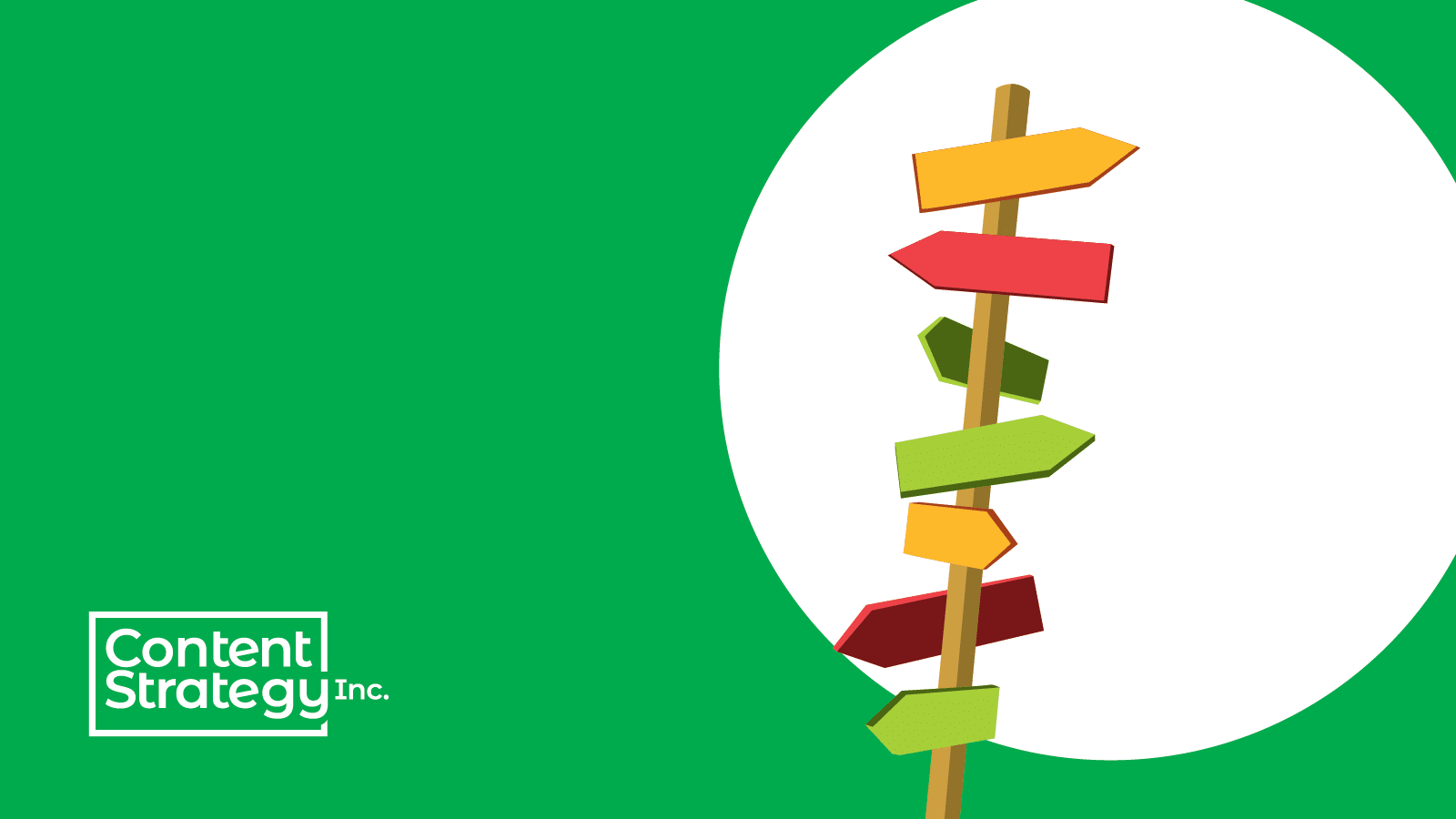Communicate concepts through messaging
Messages are concepts being communicated and are not actual page copy.
Messages can be conveyed both explicitly, through tag lines, headings, or text, or implicitly, through underlying context and imagery.
Messages are concepts being communicated and are not actual page copy. Click To TweetYou can move prospective customers through a targeted customer journey with messages by meeting customers where they are and then guiding them to make decisions and to feel good about those decisions.
People make decisions both emotionally and intellectually, and you want a mix of messages that appeal to both of these decision-making needs as people move through their customer journey.
Use appropriate messaging types
Brand messaging
Brand messages communicate the essence of a company:
- What does your company believe in?
- Why does your company do what it does?
Emotional messages often relate to the brand. They’re what make people feel good about doing business with your company.
Example: We value your safety.
Product messaging
Product messages communicate what your company does and the value that customers get from the products and services you provide.
Intellectual messaging is often related to your products or services. They’re what make people understand that a specific product or service will meet their needs.
Example: Our bicycle helmets are triple-tested to prevent head injuries in high-speed crashes.
Problem/solution messaging
Problem/solution messaging is targeted to help audiences identify the problems they’re experiencing and see the value of possible solutions. These messages motivate people to make a change or take an action.
Example: Less than half of major Canadian cities have designated bike lanes. Protect yourself with our bicycle helmets.
Align messaging with customer journey stages
We’ve simplified the customer journey into three stages for this purpose. We’ve written previously on mapping content to customer journeys; go ahead and check that out if you need a refresher.
Use the example below as a framework to align your own company’s messages to your customer journey stages.
Awareness
During the Awareness stage, brand messaging should be implicitly integrated into content so that the audience senses the truth about your brand without being explicitly told about it.
You should know what emotions your audience is feeling during the Awareness stage from your audience research. Your Awareness content should be designed to implicitly convey specific emotional messages but may also incorporate occasional, subtle, explicit messages.
Problem/solution messaging is the primary, explicit message in the Awareness stage. Any reference to a solution should be kept general rather than specific.
In the Awareness stage, product messaging is only appropriate at a high level and at the end of the Awareness stage, leading people into Consideration.
Consideration
During the Consideration stage, brand messaging should be explicitly integrated into content so that the audience has a clear understanding of your brand.
Again, use your audience research to target emotional messages to your audiences at this stage. This is also the point where your messaging should instil trust and confidence in your company.
Problem/solution messages and product messages should work together during the Consideration stage. As customers move from early consideration to late consideration, the primary, explicit messages should transition from problem/solution to product messaging.
Purchase
During the Purchase stage, brand messaging should continue to be explicitly integrated into content so that the audience maintains an understanding of your brand.
Your emotional messaging in the Purchase stage should ensure your customers feel good about their decision and confident in the product or service they’re about to buy. Consult your audience research to find out what your customers’ needs and concerns are about purchasing your product or service. Then implicitly demonstrate an understanding of your audience by explicitly addressing those needs and concerns.
Problem/solution and product messages are secondary messages during the Purchase phase. Include them as support for the emotional messaging.
Here’s a visual of the example.

Sample customer journey messaging
Hopefully, you’re able to add research-based targeted messaging to your customer journeys. It’s a very effective way to address your audience’s needs as they move along the customer journey. Any questions? Reach out to us!
Further reading
Content mapping part one: Understanding content elements
Content mapping part two: Mapping content to customer journeys
